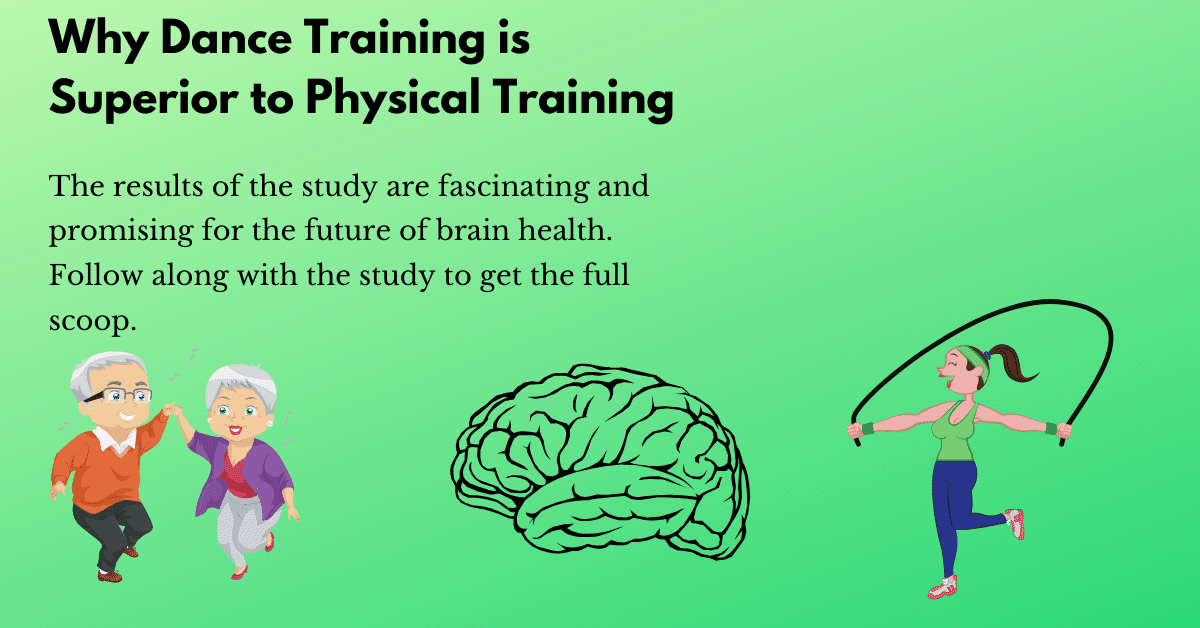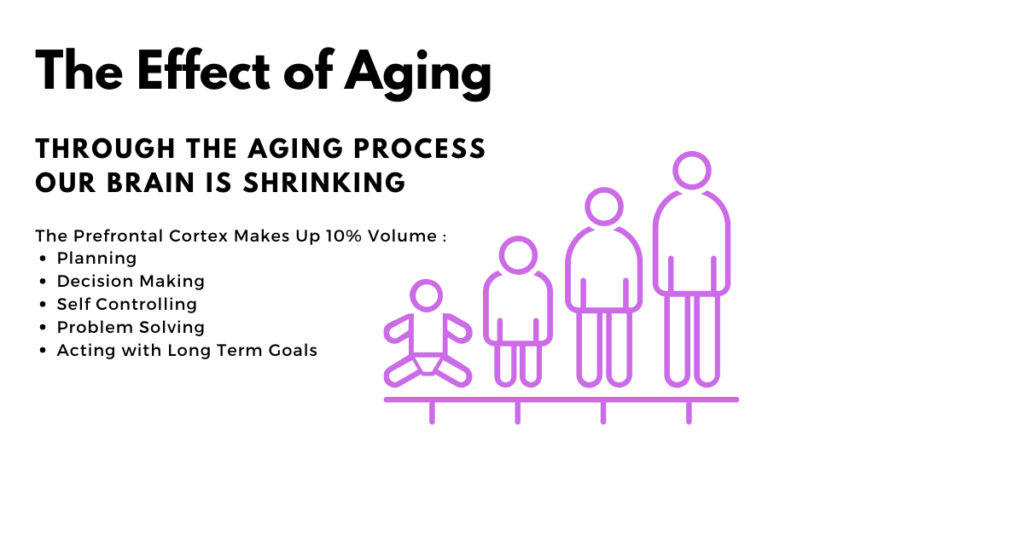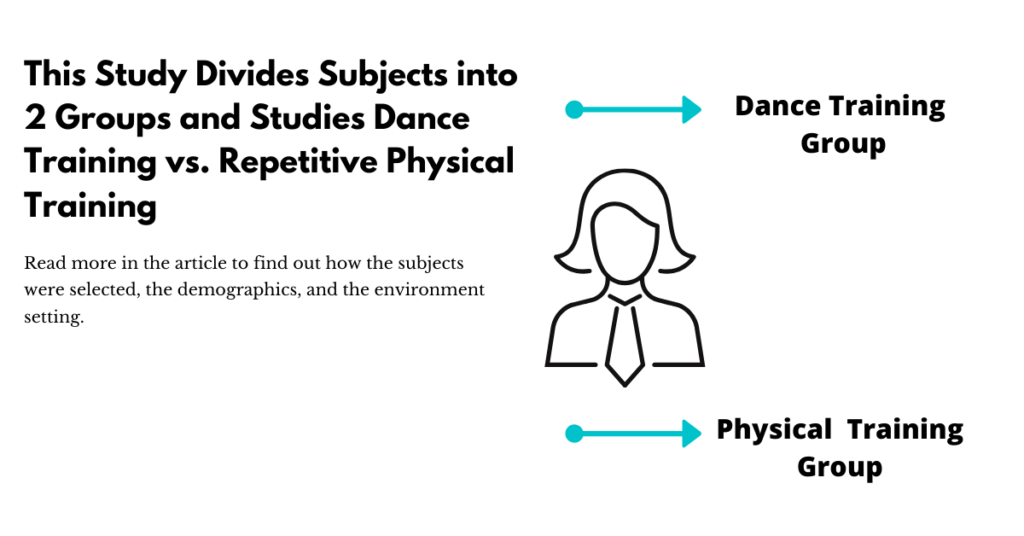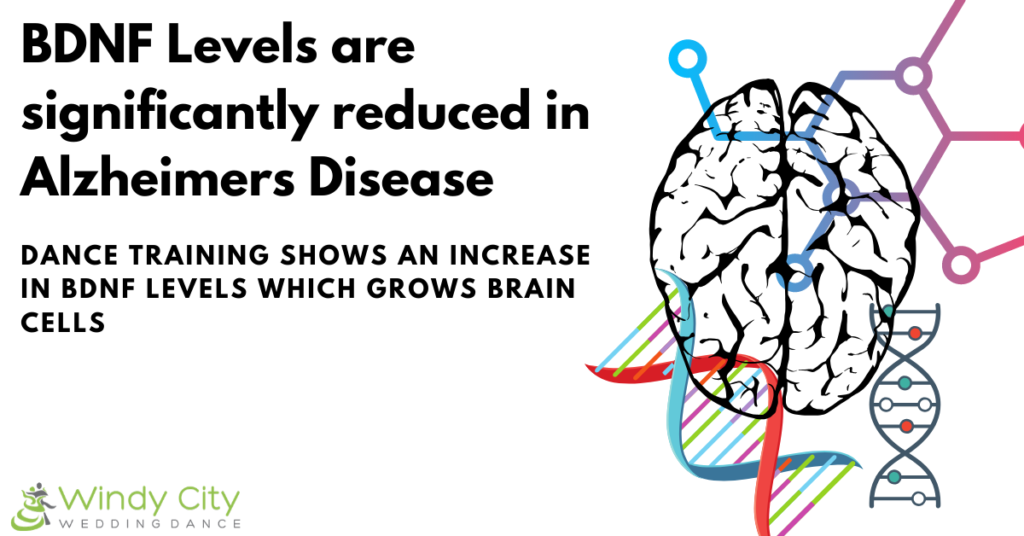Why Dance Training Beats Repetitive Physical Training

Are you guilty of sharing articles that highlight the beneficial effects of dancing on cognitive function? So am I. As a dancing coach, have I convinced my students? We all know that dancing is good for your physical as well as mental well-being. What is the evidence and science behind it though? How can I support my statements to help and benefit my students? Find out why dance training is superior to repetitive physical training.
Herein, I will try to convince you with supporting documentation and real facts. Are you ready? So let’s dive into the science behind it.
The Effects of Aging
First of all, we need to understand how the aging process affects our brain. It shrinks it! Yes indeed our brain volume decreases with advanced age.
Say what? That sounds terrible! The prefrontal and temporal cortices* are mainly affected by this shrinkage.

The prefrontal cortex- making up 10% of brain volume- is responsible for executive functions which include:
o Planning
o Decision Making
o Problem Solving
o Self- Controlling
o Acting with Long Term Goals
Well it sounds like with a shrinking prefrontal cortex, I am moving backwards in life. Seems like my own life experience and knowledge is deteriorating. By losing these important functions, it's as if I might be headed back to my terrible twos.
But wait! If I’m losing volume then what can I do to counteract and generate new growth? The great news is that the aging brain is capable of neuroplasticity. Another big word! It means the brain has the ability to change throughout one’s life. As a result, this is how we can possibly fight negative effects of aging on the brain.
Diving Into the Dance Training Study

So let us try to answer our big question: How come dance training is more beneficial than repetitive exercise? Well, a German clinical study compared dance training and repetitive exercise.
Let us explore the study with more details. It was a paid study that included 62 normal volunteers who responded to a local advertisement. Exclusion criteria consisted of: presence of a neurological conditional, metallic implants, claustrophobia, tinnitus, BMI greater or equal to 30 kg/m2, high blood pressure, diabetes mellitus, intensive physical engagement 1 hour or more a week, abnormal performance in a cognitive screening test or symptoms of depression.
52 seniors made the cut aged from 63-80 years. They were randomly assigned into two groups: the DG (dance group) and SG (control sport group). The drop-out rate was low mainly due to attendance, illness, or they were unsatisfied with the group assignment (Reminds me of high school!). So at the end, 38 participants completed the study.
The training conditions were almost identically mirrored in both groups regarding intensity, rate of frequency and time. As we know, dance includes music, but they also introduced music for the control sport group (SG) as well. Both groups trained for 6 months. Heart frequency was monitored twice in each session. The heart was monitored during the main part of the activity and after the cool down.
A qualified dance instructor supervised each training session. The program was designed for progressive learning. Meanwhile, dance subjects learned new patterns and choreographies. Participants of the dance group were accurately trained in learning specific step sequences and learning rhythms under time pressure. Even though a lot of information was coming their way, the clock was running and the pressure was on!
- The six month dance program was divided into 2 semesters. Each semester covered 5 dance genres: line dancing, jazz dance, rock ’n’ roll, Latin-American dance and square dancing. The demand, coordination, and time pressure was increased in the second semester requiring higher level dance steps and introducing faster music.
- The six month sport group trained according to specific guidelines with a qualified fitness trainer and was focused on repetitive exercise. Each training session included 3 different focus areas: endurance, strength, and flexibility training. During the training sessions subjects participated in each focus area for 20 minutes each. Endurance training was performed on a bicycle, the strength training used equipment like barbells, rubber bands, redondo balls, gymnastics sticks and fitness balls. Combined arm and leg movements were avoided to keep coordination requirements low.
This study showed that dance has a strong potential to induce more positive results and effects on brain volumes in an elderly community. It can be explained by the fact that dancing promotes a nice array of simultaneous multi-tasking: spacial orientation, movement coordination, endurance, balance, communication and interaction. Therefore, consistent implementation of new choreographies created an environment of constant learning. The dance training program had a low risk of accidents and could easily be accessed.
In this study the BDNF plasma level increased for dance training subjects. BDNF, also known as brain-derived neurotrophic factor, is a protein responsible for neuron growth. It’s an important factor in synaptogenesis, dendritogenesis as well as neurogenesis. So in brief and in a much simpler way, it helps brain cells communicate and coordinate the information more efficiently and regenerate.

To understand the importance of this protein, let us review the Alzheimer’s example. BDNF levels in the brain and blood are significantly reduced in Alzheimers disease which is a neurodegenerative process that leads to cognitive decline. The new volume increase in gray matter in the study dance subjects was due to the increase in BDNF.
So in summary, while both repetitive exercise and dance training are beneficial, the latter showed better results. That’s right! Such training help regrow brain cells. It’s the combination of physical exercise and sensory enrichment through dance training that’s essentially regenerating our brain cells.
So there you have it. By creating a training environment similar to the dance training above outlined in the study, we can create a positive outcome and now you finally have some science to back it up. Are you interested in learning about dance? Visit us https://windycityweddingdance.com/
Article Cited: https://www.ncbi.nlm.nih.gov/pmc/articles/PMC6040685/
1 German Center for Neurodegenerative Diseases (DZNE), Magdeburg, Saxony-Anhalt, Germany
2 Institute for Sport Science, Otto-von-Guericke University, Magdeburg, Saxony-Anhalt, Germany: study DRKS-ID: DRKS00012605
3 Institute for Physiology, Magdeburg, Saxony-Anhalt, Germany
4 Center of Behavioral Brain Sciences (CBBS), Magdeburg, Saxony-Anhalt, Germany
5 University Clinic for Neurology, Magdeburg, Saxony Anhalt, Germany
Vanderbilt University, UNITED STATES
*Cortices is the plural word for cortex